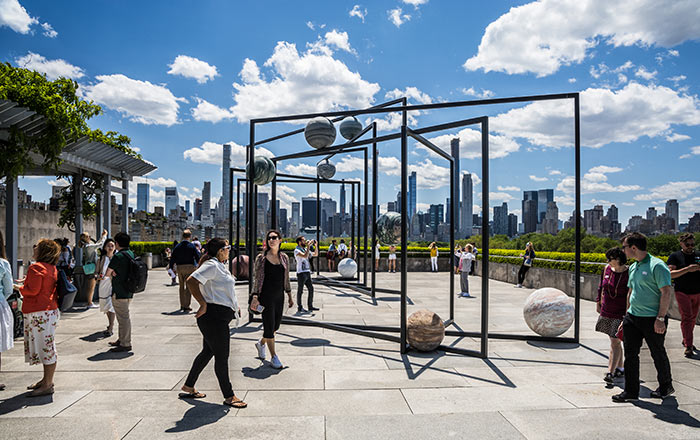Ode to the Valley of Wonderment
Raqib Shaw Kashmir
Not on view
Raqib Shaw is an Indian artist based in London, who is renowned for his richly detailed and intricate paintings. In Ode to the Valley of Wonderment, Shaw addresses the historical genre of landscape painting. He not only references the artistic traditions of Persian and Mughal miniature painting but also draws from the artistic lexicon of Old Master painters such as Thomas Gainsborough, John Constable, Caspar David Friedrich and Bruegel the Elder. Ode to the Valley of Wonderment is a dense, multi-episodic work in which numerous narratives unfold simultaneously. At the center of the work, the artist himself lies on his stomach, gazing into a mirror and engrossed by his own visage. Surrounded by monkeys and hybrid human animal forms playing musical instruments, he is lost in an ecstatic reverie, subsumed in an aura of intoxicated decadence. Two candlelit pavilions, whose architectural motifs recall details from Mughal architecture, frame this extravagant scene. A certain melancholy is imparted by the moonlit landscape backdrop for this bacchanalia, a set of wintry mountains deriving from Shaw's own memories of the topography of Kashmir, the disputed northern territory of India, colloquially described as "paradise on earth," where Shaw was born and which his family was forced to leave during the civil war in 1989. Kashmir is a recurrent motif in Shaw's oeuvre, a lost idyll, homeland from which Shaw is exiled. Thus, Ode to the Valley of Wonderment presents an opulent, fantastical world on the verge of devastation and wrought by excess, rendered replete with art historical references, and undergirded by a personal history of loss and longing.
This image cannot be enlarged, viewed at full screen, or downloaded.
